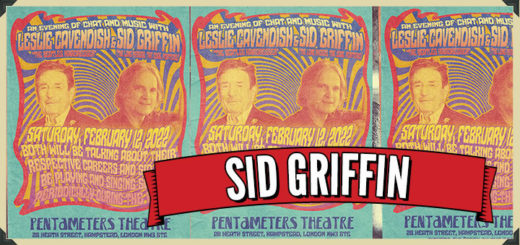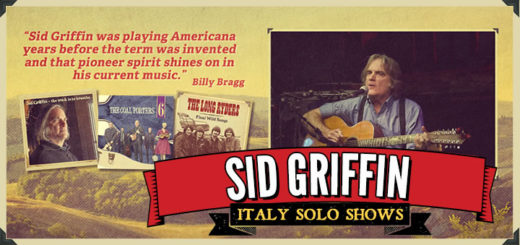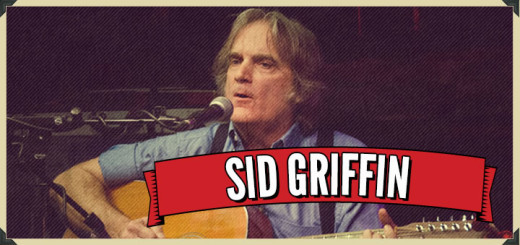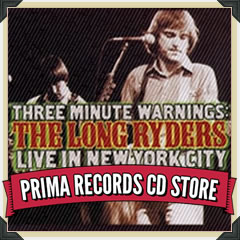Book Review: ‘Million Dollar Bash: Dylan, the Band, and the Basement Tapes’ by Sid Griffin
The Basement Tapes as an album is a kind of touchstone in the big picture of Bob Dylan’s career. Recorded during an extended convalescence in Woodstock, NY, following his 1967 motorcycle accident, featuring the Hawks (later to become the Band) as his backing band, and largely recorded — as the title suggests — in the basement rec rooms of his friends’ houses in the area, it’s an album that signaled a shift in Dylan’s music, and it’s become kinda legendary to boot. It didn’t see wide release until 1975, but by that point in time, it had already made the rounds (and music history) as the first major bootleg record (released by TMQ under the title Great White Wonder in the summer of 1969). Dylan’s disappearance from public life, disdain for corporate America, the rise of the counter-culture, and the myths around those basement sessions themselves are the threads that Sid Griffin sets out to unravel in Million Dollar Bash: Bob Dylan, the Band, and the Basement Tapes.
This edition (newly revised, coinciding with the release of The Basement Tapes on CD back in November) doesn’t mess around. In discussing the importance of Woodstock as a setting for Dylan’s music to flourish, Griffin — himself a Dylan fan but also the front man of alt/garage rock band the Long Ryders –goes back to the settlement of the Hudson Valley in the good ol’ days of the early 17th century. It’s not immediately necessary to go that far back, you might think, but there’s something very appropriate about it. It sets the tone. The whole book is rooted from the get-go because it gives a solid damn about the history of the place where these events happened.
(Incredibly silly stray observation: it’s not the biggest book ever but its thick, heavy pages make this one of the heftiest I’ve ever handled — it just feels important, and that’s before you’ve even read a single word. Props to whoever selected the paper weight for this one!)
But Woodstock as a physical setting is only half the story; Griffin gives that specific moment in time ample space to blossom as well. Nineteen sixty-seven was a heady year for rock ‘n’ roll, but while counterparts in England and the West Coast were experimenting with psychedelics, Dylan was recovering from that motorcycle accident. His 1967 was very different than the Beatles’ or Jimi Hendrix’s. At the end of the day, this album couldn’t have been recorded without the basements and the rec rooms, but it also couldn’t have been recorded in 1966 or 1968 and still had the same potent effect. Griffin goes to great lengths to paint a picture of that very specific time and place and succeeds in hammering home the point that these songs weren’t created in a vacuum but grew organically from a very particular set of circumstances that would have been hard to replicate anywhere else at any other time.
The recent release of The Basement Tapes lends itself very nicely to this book, and diving into both concurrently is about the best way to experience either. Reading through the analysis — and Griffin, once again, goes as in-depth as possible here, delving into the whosits and whatsits behind every single track — is like being a fly on the wall. Personnel, who-played-what, what exactly was played, where was it recorded, the date, time, length of session — it’s all there, and it’s all invaluable to fans of Dylan, the Band, the Tapes themselves, or just this era of music in general. A considerable amount of effort went into just this portion of the book alone, and without all the rest this bit here would make the book worth owning.
There are a lot of contenders for the definitive book about The Basement Tapes or Dylan and the Band, but Griffin’s provides a seriously deep analysis without being overblown and full of hyperbole. It doesn’t presume that the reader needs a ton of background info on the subject matter (although a slightly-more-than-passing familiarity is helpful), and it certainly doesn’t insist upon itself as the be-all, end-all (although I would argue that, as far as this subject matter is concerned, it might be). It has a fun informality that makes it engaging, so the book feels like a conversation as opposed to strictly didactic; it’s almost like listening to someone describe what it was like to be there, but with a kind of detachment that also makes it feel scholarly instead of gossipy, informing while it entertains.
Review by Lindsay Stamhuis
Originally posted at http://www.rebeatmag.com/book-million-dollar-bash-dylan-the-band-and-the-basement-tapes-by-sid-griffin/
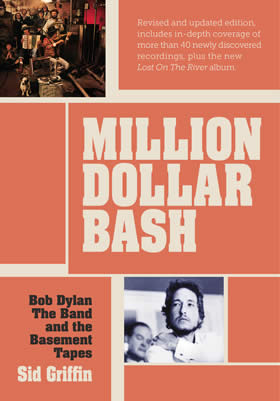 With 13,000 new words detailing every single Basement Tapes song and explaining who played what as well as where the song was recorded this Updated & Revised version has it all. Also discussed are all forty songs from T-Bone Burnett’s Lost On The River series of newly recorded Basement Tapes tracks plus there is a complete discography of Basement Tapes cover versions down through the years.
With 13,000 new words detailing every single Basement Tapes song and explaining who played what as well as where the song was recorded this Updated & Revised version has it all. Also discussed are all forty songs from T-Bone Burnett’s Lost On The River series of newly recorded Basement Tapes tracks plus there is a complete discography of Basement Tapes cover versions down through the years.
After interviewing Robbie Robertson, Roger McGuinn, Manfred Mann, Ramblin’ Jack Elliott, Chris Hillman, Tom McGuinness, Arlo Guthrie and so many other Dylan insiders it is clear Million Dollar Bash: Bob Dylan, The Band & the Basement Tapes is THE definitive guide to the Basement Tapes …and always will be.
Read it and be amazed!
£13 including UK P&P £16 including Worldwide P&P
